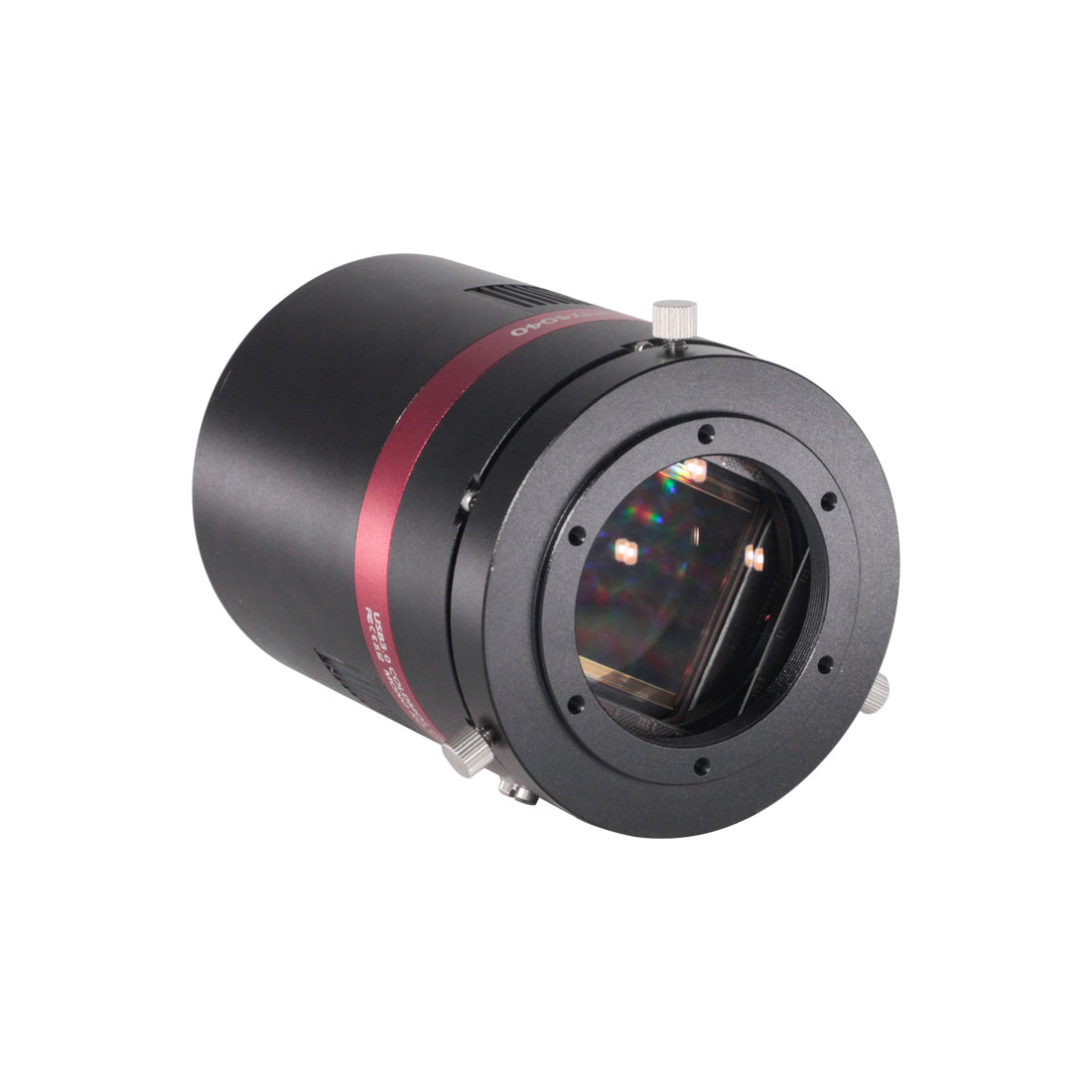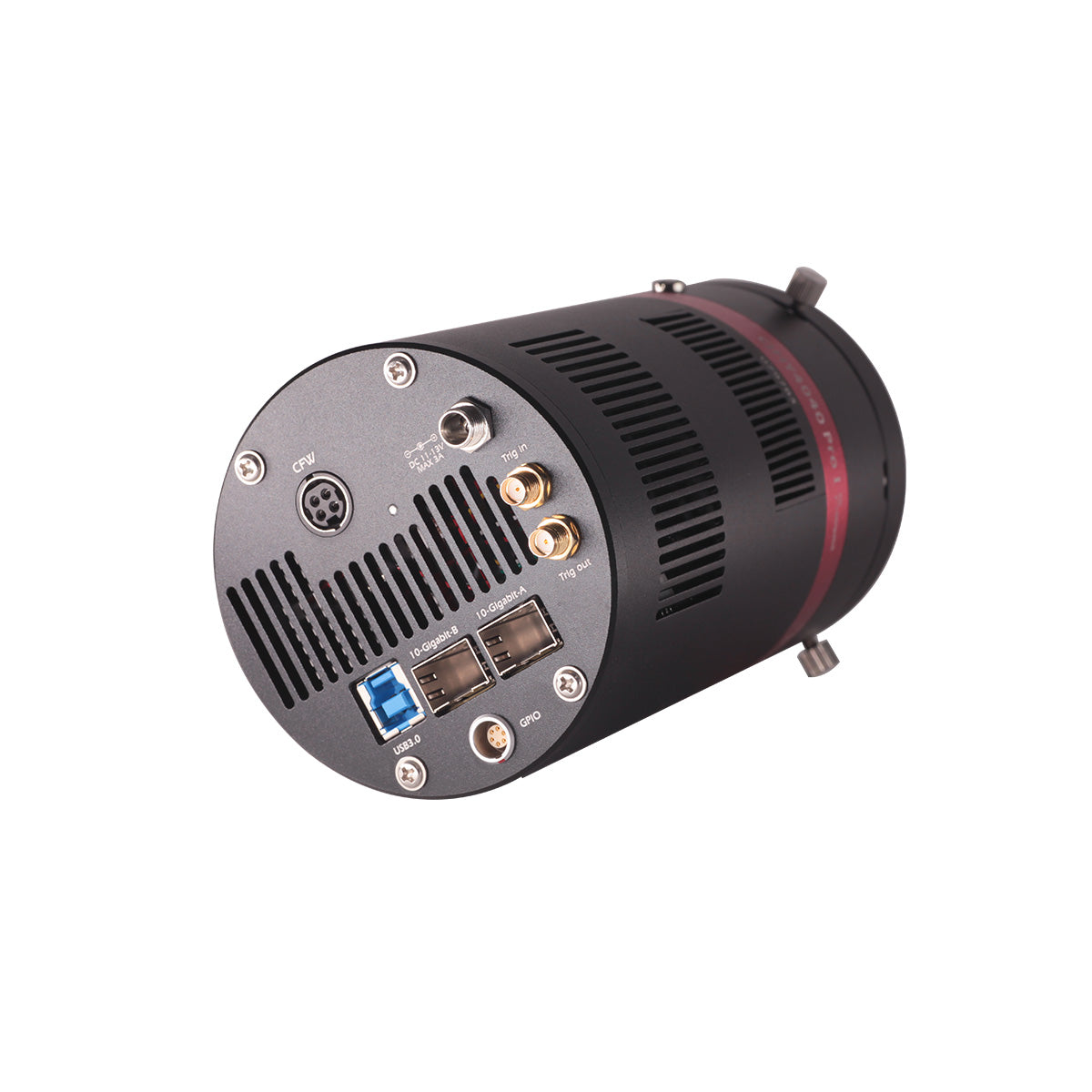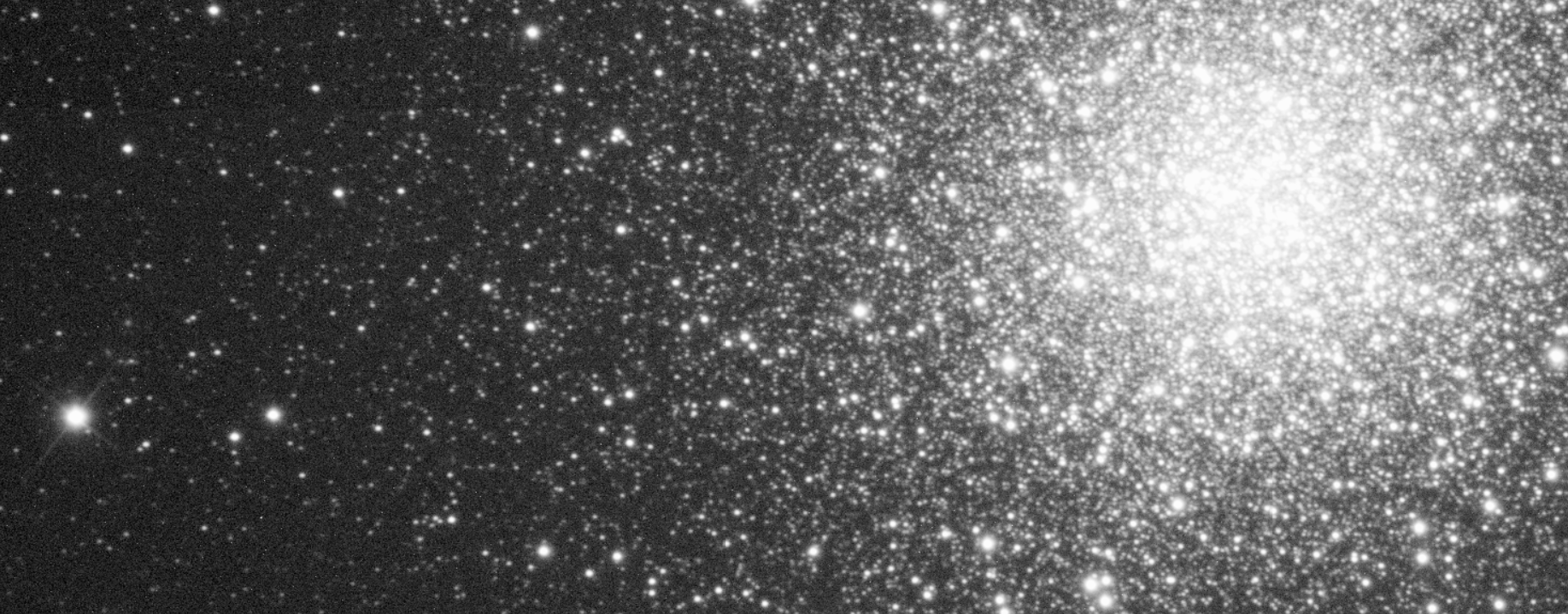QHY4040Pro
QHY4040Pro
Couldn't load pickup availability
The QHY4040Pro I is a scientific cooled CMOS camera equipped with the GSENSE4040 4K*4K scientific CMOS sensor. Let’s explore its features:
-
Sensor and Resolution:
- The QHY4040Pro I features a 36.9mm x 36.9mm square sensor with 9.0μm pixels arranged in a 4k x 4k array.
- It offers a substantial 36 megapixels for capturing detailed images of celestial objects.
- The typical applications of this camera include astronomy imaging, spectrum analysis, dynamic x-ray DR, and satellite tracking1.
-
FSI and BSI Versions:
- The QHY4040Pro I is available in both front-illuminated (FSI) and back-illuminated (BSI) versions.
- The FSI version has a peak QE of 74%, a 70ke full-well capacity at the lowest gain, and a 4e readout noise at the highest gain.
- The BSI version boasts a peak QE of 90%, a 39ke full-well capacity at the lowest gain, a 2.3e readout noise at the highest gain, and a wide spectrum response from UV to Near IR1.
-
Dual Gain Channels and Data Combination:
- The QHY4040Pro I supports selectable dual 12-bit channel output (high gain or low gain).
- It also facilitates on-camera dual 12-bit to 16-bit data combination processing.
- The standard version features two-stage TEC cooling with air cooling, and a liquid cooling version is available upon customization1.
-
Live Video Mode and Single-Frame Mode:
- In single-frame mode, the QHY4040Pro I operates at a low CMOS-driven speed.
- Its noise performance behavior is similar to the 8FPS@16BIT mode in Live Video Mode, which supports five different CMOS clocks.
- The maximum frame rate ranges from 8FPS to 20FPS1.
-
Zero Amplifier Glow:
- The camera exhibits zero amplifier glow, ensuring clean and accurate images even during long exposures.
- Dark frame samples demonstrate its exceptional performance1.
In summary, the QHY4040Pro I combines high resolution, low noise, and efficient cooling, making it an excellent choice for scientific imaging and astrophotography applications1. You can find more information about this camera on the QHYCCD website.
Liquid cooling version is also available (Customization required).
Taken together with a 50cm telescope in Corona Borealis Observatory, Ali, Tibet, China
QHY4040 standard version is the single-channel ADC output version. It is using the High Gain Channel to output the low readout noise image. It supports both live video mode and single-frame mode. In single-frame mode. it works at a low CMOS-driven speed. The behavior of the noise performance is the same with the 8FPS@16BIT mode in Live video mode. In live video mode, it supports five different CMOS clocks. Max Frame rate from 8FPS to 20FPS.
The QHY4040 has zero amplifier glow. Please check the following dark frame for it.
Dark Frame Samples
Here is a dark frame of 10sec exposure and 30sec exposure @-7.5C. The QHY4040 can get about max 35C to 40C below ambient.
http://note.youdao.com/noteshare?id=ae2fabb24d1742f207ba75613648e7c4
A detailed Dark Frame Samples (Gain 0 and Gain 16. -15C, 0sec bias frame, 30, 60, 120, 300sec Dark Frame)
http://note.youdao.com/noteshare?id=848bca2fef982e0e6cf9b746b0f65ef3
About HDR mode support
QHY4040PRO support the dual 12bit convert to 16bit function. Users can input the combination factor and offset factor to the FPGA of the camera via an API interface. For different sensor temperatures, the offset factor needs to be calibrated.
Hardware Signal of Exposure End Time
QHY4040 supports hardware exposure ending signal output. Which can be used for high precise time-domain imaging. This signal can be measured by an external timing base and you will know the precise time of the starting and ending exposure time.
Multiple Working Mode
QH4040 supports the continuous live video mode, single-frame mode, and burst mode. In the live video mode, the camera is free-running to capture the images. In single-frame mode. The camera will start capture one frame when you send the start exposure command. In burst mode, The camera will be in idle status, you can define how many frame will be output and after you send the start exposure command, it will start to capture these frames and then stop output. In both single-frame mode and burst mode, the timing is in sync with the start exposure command. It is beneficial for the high precision timing record work when working with the hardware exposure ending signal.
This picture shows the hardware exposure ending signal with a burst mode that output from the camera. This is a four frames burst. Each falling edge indicates an exposure ending time.

Specifications
| Model | QHY4040 | QHY4040PRO I-FSI | QHY4040PRO I-BSI |
| CMOS Sensor | Gpixel Gense4040 FSI / BSI sCMOS Sensor | ||
| Pixel Size | 9.0um x 9.0um | ||
| CMOS Chamber Optic window glass | AR+AR multiple layer coating anti-reflection glass | ||
| Sensor Size | 36.9mm*36.9mm | ||
| Effective Pixel Area | 4096 x 4096 | ||
| Effective Pixels | 16.8 Megapixels | ||
| Effective Image Area | 36.9mm x 36.9mm | ||
| Fullwell | Only supports Low Gain channel 26ke- | High Gain Channel >70ke
Low Gain Channel 26ke. |
36ke- |
| AD Sample Depth | Dual 12bit ADC. Only output high gain channel. | Dual 12bit ADC (1)Dual Channel Output Together Mode. (2)Single Channel Mode (High Gain Channel and Low Gain Channel Seletable) (3)Dual 12bit Combine to 16BIT Image mode. |
Dual 12bit ADC (1)Dual Channel Output Together Mode. (2)Single Channel Mode (High Gain Channel and Low Gain Channel Seletable) (3)Dual 12bit Combine to 16BIT Image mode. |
| Full Frame Rate | 20FPS@4096*4096 8bit (Clock Speed 4) 18FPS@4096*4096 8bit (Clock Speed 3) 16FPS@4096*4096 8bit (Clock Speed 2) 12FPS@4096*4096 8bit (Clock Speed 1) 8FPS@4096*4096 8bit (Clock Speed 0) 8FPS@4096*4096 12bit (Clock Speed 0) |
USB3.0 Mode, PCIE Mode
20FPS@4096*4096 8Bit 10FPS@4096*4096 16Bit 39FPS@2048*2048 8Bit 19FPS@2048*2048 16Bit 73FPS@1080*1080 8Bit 37FPS@1080*1080 16Bit |
USB3.0 Mode, PCIE Mode
20FPS@4096*4096 8Bit 10FPS@4096*4096 16Bit 39FPS@2048*2048 8Bit 19FPS@2048*2048 16Bit 73FPS@1080*1080 8Bit 37FPS@1080*1080 16Bit |
| Readout Noise | FSI version Typical 4e- @ Gain31 (16.5x) |
FSI version Typical 4e- @ Gain31 (16.5x) |
BSI version Typical 2.3e- @Gain50 (16.5x) |
| Dark Current | FSI version 0.05e/pixel/sec @ -15C |
FSI version 0.05e/pixel/sec @ -15C |
BSI version 0.16e/pixel/sec @ -20C |
| Exposure Time Range | 20us – 600sec | ||
| Shutter Type | Electric Rolling Shutter | ||
| Computer Interface | USB3.0 ONLY | USB3.0 + 2*10Gbps Filber | USB3.0 + 2*10Gbps Filber |
| Built-in Image Buffer | QHY4040 128MB DDR2 Memory |
2GByte (16Gbit) DDR3 Memory | 2GByte (16Gbit) DDR3 Memory |
| Exposure Ending Hardware Pulse Output | Optional TrigOut and Shutter Measure waveform | ||
| GPIO | Four High Speed FPGA Controlled GPIO . Can be used for high precise GPS timestamp socket. Or the Electric Shutter on/off waveform output for GPS Card. Or Multiple Camera Synchronized Port and so on. | ||
| Cooling System | Dual Stage TE Air Cooler(-35C below ambient)(Test temperature +20°) The QHY4040 liquid cooling customized version has a maximum temperature difference of -40 degrees in continuous mode and single frame mode with an exposure time greater than 1 second. |
||
| Recommended flow rates for water-cooled versions | 1.6ml/s | ||
| Humidity Sensor | — | QHY4040PRO I has the humidity Sensor in CMOS chamber | QHY4040PRO I has the humidity Sensor in CMOS chamber |
| Anti-Dew Heater | Yes | ||
| Telescope Interface | M54/0.75 | ||
| Optic Window Type | AR+AR High Quality Multi-Layer Anti-Reflection Coating | ||
| Back Focal Length | 17mm(±0.2) | ||
| Weigth | 785g | about 990g | about 990g |
Share






 Laboratory Equipmentcamer
Laboratory Equipmentcamer